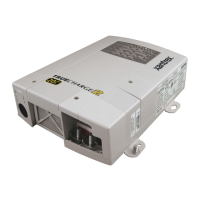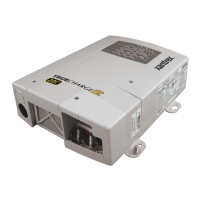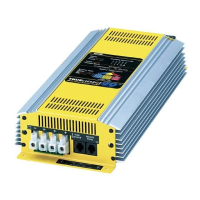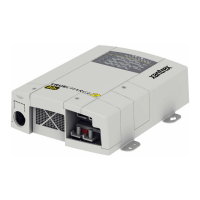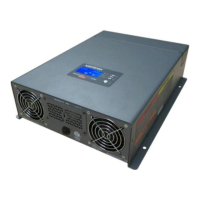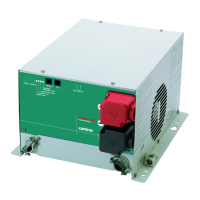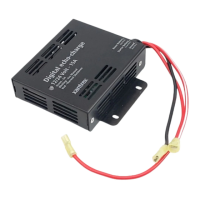30
2.0 INSTALLATION
©2000 Xantrex Technology Inc.
Generators
An AC generator can be used as an input source instead of the utility power, or can be
connected (via additional hardware) to power the loads when utility is not present (utility outage),
and to charge the batteries. The generator must be of the permanently installed type and not a
portable type unit used for emergency power. Small emergency type generators may not have a
stable enough voltage or frequency output for the inverter to synchronize to, or provide enough
current to fully charge the batteries.
Generator Requirements
The maximum charge rate the battery charger can deliver is dependant upon the peak AC
voltage available. Since the battery charger uses only the top portion of the input sine wave,
small variations in peak voltage result in large variations in the amount of energy to the charger.
The chargers rated output is based on a utility voltage of 120 VAC
rms
which has a peak voltage of
169 VAC
p
(230 VAC
rms
has a peak voltage of 325 VAC
p
).
Low power generators may not produce enough voltage under heavy load conditions to fully
charge the batteries as the voltage peaks may be clipped, limiting the maximum charge rate. Size
the generator appropriately for the system, including battery charge and load current.
The following table demonstrates how the peak voltage available affects the charging current:
Peak Voltage
Av a ila ble
DR1512 DR2412 DR1524 DR2424 DR3624
170 VAC
P
70 amps 120 amps 35 amps 70 amps 70 amps
975-0012-012
Generator Type Inverter Type
Typical MAX charge
Rate amps
Honda 800 DR1512 43 amps
Honda 2200 DR1512 57 amps
Homelite 2500 DR1512 11 amps
Honda 3500 DR1512 39 amps
Honda 6000 DR1512 70 amps
Honda 1600 DR1524 25 amps
Westerbeke 7.0 kW DR1512 Approx. 45 amps
Westerbeke 12.5 kW DR1512 Approx. 65 amps
975-0012-013
Table 5
Peak Input Voltage vs Charging Current
Table 6
Generator Types

